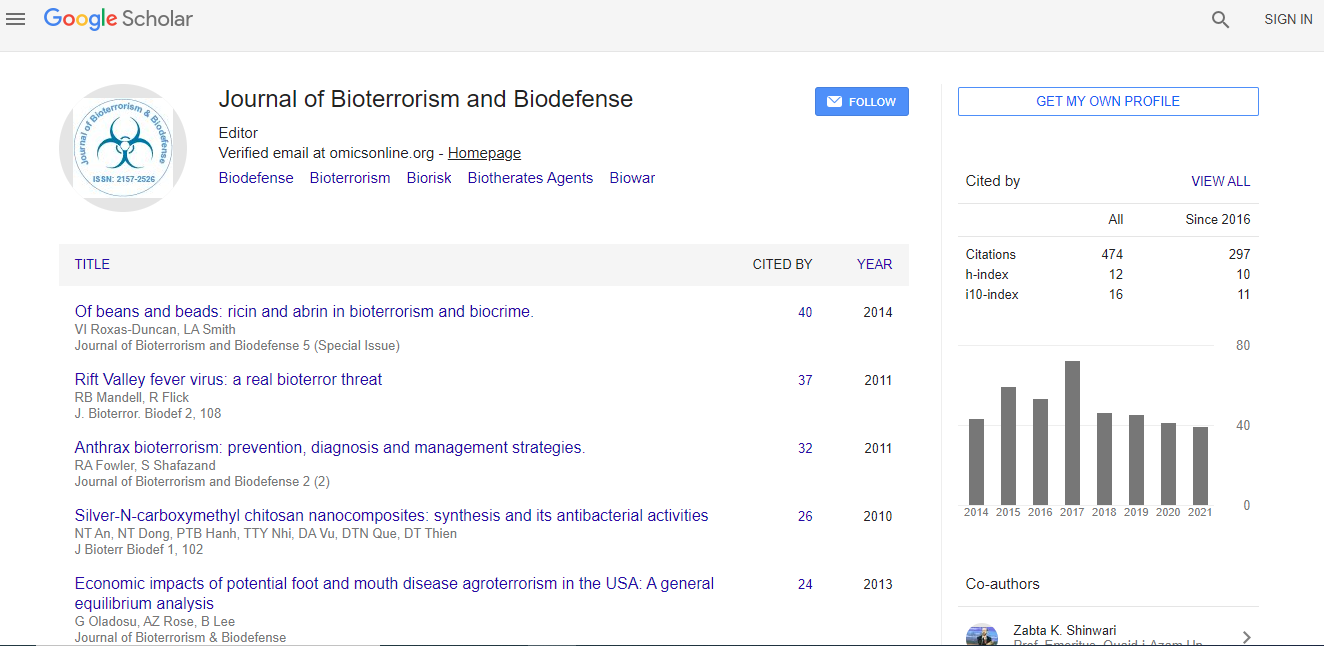Review Article
Evidence for the Source of the 2001 Attack Anthrax
Martin E. Hugh-Jones1*, Barbara Hatch Rosenberg2, and Stuart Jacobsen3
1Professor Emeritus, Louisiana State University; Anthrax Moderator, ProMED-mail, USA
2Sloan-Kettering Institute for Cancer Research and State Univ. of NY-Purchase (retired), USA
3Technical Consultant Silicon Materials, Dallas, TX, USA
- *Corresponding Author:
- Martin E. Hugh-Jones
Professor Emeritus
Environmental Sciences Department
Louisiana State University
Baton Rouge, LA 70803, USA
Tel: +1-225-578-5599
Fax: +1-225- 578-4286
E-mail: mehj@vetmed.lsu.edu
Received Date: October 01, 2012; Accepted Date: December 12, 2012; Published Date: December 17, 2012
Citation: Hugh-Jones ME, Rosenberg BH, Jacobsen S (2012) Evidence for the Source of the 2001 Attack Anthrax. J Bioterr Biodef S3:008. doi: 10.4172/2157-2526.S3-008
Copyright: © 2012 Hugh-Jones ME, et al. This is an open-access article distributed under the terms of the Creative Commons Attribution License, which permits unrestricted use, distribution, and reproduction in any medium, provided the original author and source are credited.
Abstract
The elemental composition of the 2001 attack anthrax presents critical clues that were not considered or were misinterpreted throughout the original investigation. Extensive experimental data released by the FBI after the anthrax case was closed make it possible to trace some of the implications of these clues: the substantial presence of tin, a toxic material that must have been added subsequent to growth, and a uniquely high content of silicon in the attack spores. No Bacillus spore preparations other than the attack anthrax have ever been found to contain such a high level of silicon, although some surrogate spore powders prepared at Dugway following FBI instructions have been cited as evidence that high levels of silicon can be reproduced; however, examination of the experimental data reveals that the silicon in these samples was unquestionably an artifact. The elemental evidence suggests that the attack spores had been coated with silicone (a polysiloxane) in the presence of tin, which catalyzes the cross-linking of polysiloxane chains needed to form an encapsulating coating on the spore coat. Microencapsulation helps protect biological agents from damage during atmospheric exposure and from the body’s defenses during infection, and would defeat some detection methods. Microencapsulation, which would explain the location and amounts of both tin and silicon in the attack spores, requires special expertise and sophisticated facilities. DOD-sponsored projects explicitly involving microencapsulation at DARPA, Dugway and perhaps elsewhere were spelled out publicly in budget documents in 1999 and thereafter, and executed at the very time of the anthrax attacks. Both the Dugway laboratory and Battelle Memorial Institute, a sub-contractor at Dugway, had extensive experience in making Bacillus spore powders; both had access to Bacillus anthracis genetically matching the attack spores; both could have made the attack spores legally for institutions conducting biodefense activities that required microencapsulated spores. Furthermore, a small but significant amount of tin, about 4% of that in the attack spores, has been found in some surrogate spore products made at Dugway. A measureable tin content has not been found in any other Bacillus spores except the attack spores. The tin in the Dugway surrogates may have been a remnant, indicative of earlier, classified work. Avoidance of governmentsponsored, classified research may account for some of the limitations of the investigation.

 Spanish
Spanish  Chinese
Chinese  Russian
Russian  German
German  French
French  Japanese
Japanese  Portuguese
Portuguese  Hindi
Hindi 